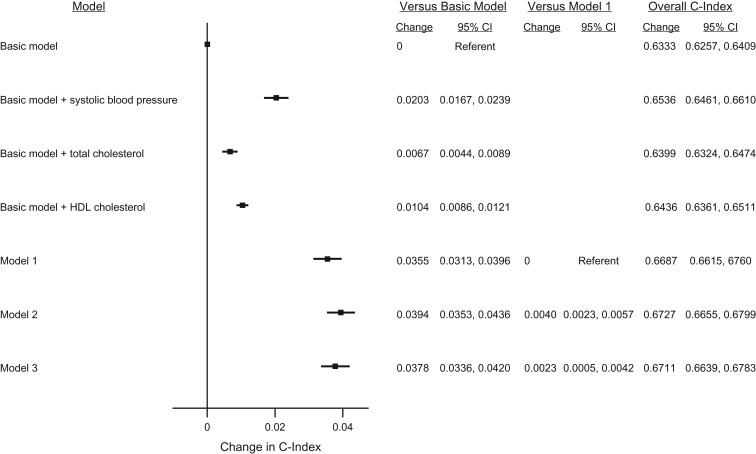Figure 1.
Change in cardiovascular disease (CVD) risk discrimination between the models in the validation data set in a study of CVD risk prediction, Emerging Risk Factors Collaboration, 1962–2014. A total of 66,353 people from 38 studies contributed to the estimation of 5-year CVD risk (i.e., contributed to the validation data and were alive at the time of CVD risk prediction). Of these, 2,667 people experienced a CVD event during the 5-year CVD risk estimation period. Models were stratified by sex and adjusted, where appropriate, for baseline conventional CVD risk factors: age, smoking status, history of diabetes, and baseline systolic blood pressure (SBP), total cholesterol, and high-density lipoprotein (HDL) cholesterol. Point estimates on the right-hand side of the graph relate to the improvement in risk prediction. Model 1 included variables from the basic model and baseline measures of SBP, total cholesterol, and HDL cholesterol. Model 2 included variables from the basic model and cumulative mean values of previous measures of SBP, total cholesterol, and HDL cholesterol. Model 3 included variables from the basic model and summary information from the longitudinal mixed-effects model of repeated measurements of SBP, total cholesterol, and HDL cholesterol.

